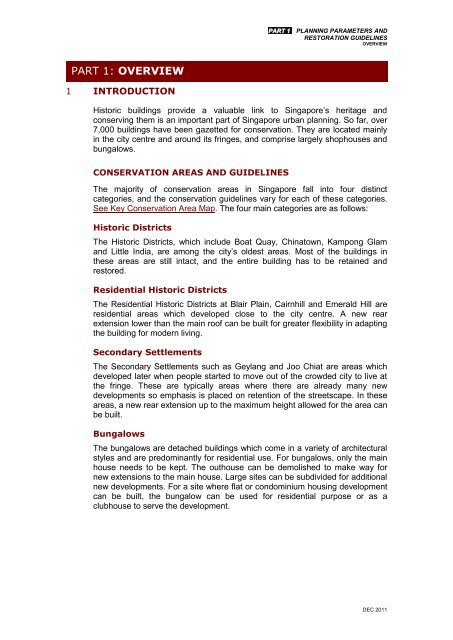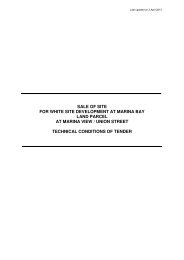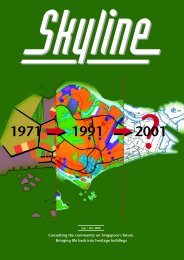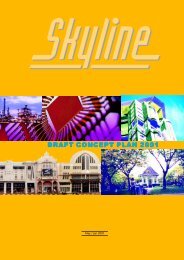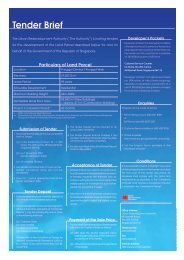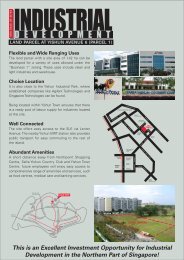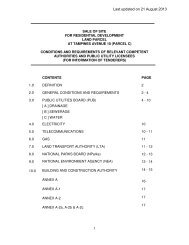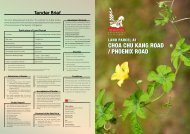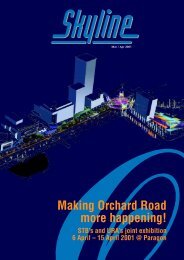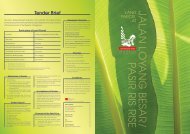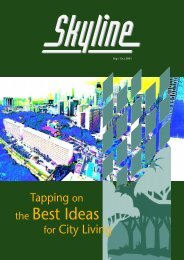CON Guidelines - Urban Redevelopment Authority
CON Guidelines - Urban Redevelopment Authority
CON Guidelines - Urban Redevelopment Authority
Create successful ePaper yourself
Turn your PDF publications into a flip-book with our unique Google optimized e-Paper software.
PART 1: OVERVIEW<br />
1 INTRODUCTION<br />
PART 1 PLANNING PARAMETERS AND<br />
RESTORATION GUIDELINES<br />
OVERVIEW<br />
Historic buildings provide a valuable link to Singapore’s heritage and<br />
conserving them is an important part of Singapore urban planning. So far, over<br />
7,000 buildings have been gazetted for conservation. They are located mainly<br />
in the city centre and around its fringes, and comprise largely shophouses and<br />
bungalows.<br />
<strong>CON</strong>SERVATION AREAS AND GUIDELINES<br />
The majority of conservation areas in Singapore fall into four distinct<br />
categories, and the conservation guidelines vary for each of these categories.<br />
See Key Conservation Area Map. The four main categories are as follows:<br />
Historic Districts<br />
The Historic Districts, which include Boat Quay, Chinatown, Kampong Glam<br />
and Little India, are among the city’s oldest areas. Most of the buildings in<br />
these areas are still intact, and the entire building has to be retained and<br />
restored.<br />
Residential Historic Districts<br />
The Residential Historic Districts at Blair Plain, Cairnhill and Emerald Hill are<br />
residential areas which developed close to the city centre. A new rear<br />
extension lower than the main roof can be built for greater flexibility in adapting<br />
the building for modern living.<br />
Secondary Settlements<br />
The Secondary Settlements such as Geylang and Joo Chiat are areas which<br />
developed later when people started to move out of the crowded city to live at<br />
the fringe. These are typically areas where there are already many new<br />
developments so emphasis is placed on retention of the streetscape. In these<br />
areas, a new rear extension up to the maximum height allowed for the area can<br />
be built.<br />
Bungalows<br />
The bungalows are detached buildings which come in a variety of architectural<br />
styles and are predominantly for residential use. For bungalows, only the main<br />
house needs to be kept. The outhouse can be demolished to make way for<br />
new extensions to the main house. Large sites can be subdivided for additional<br />
new developments. For a site where flat or condominium housing development<br />
can be built, the bungalow can be used for residential purpose or as a<br />
clubhouse to serve the development.<br />
DEC 2011


